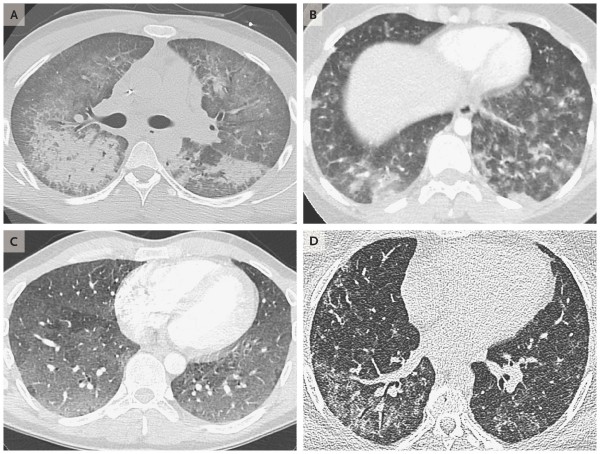152 reports of vaping-related lung injuries reported to Massachusetts health officials, 29 cases reported to the CDC
The Department of Public Health today reported 10 new cases of vaping-associated pulmonary injury— now totaling 29 cases, 10 confirmed and 19 probable—to the US Centers for Disease Control and Prevention (CDC). Information provided to the CDC also includes evidence gathered from patient interviews and patient medical records reviews.
To date, DPH has received 152 reports of suspected vaping-related lung injuries. Of the 152 reports, 29 cases were reported to the CDC, 63 cases are under active investigation and 60 have been ruled out. One patient, a woman in her 60s from Hampshire County, was the state’s first death from vaping-related lung injury, which DPH previously reported.

DPH has conducted patient interviews in 12 of the 29 cases reported to CDC and continues to contact patients for interviews. All 29 patients’ medical records have been reviewed by DPH.
Of the 29 cases reported to the CDC, 15 of the patients are female and 14 are male. Twenty-five of the patients were hospitalized as a result of their illness.
In addition, 20 of the 29 patients reported vaping tetrahydrocannabinol (THC), an ingredient found in marijuana, with or without nicotine. Of those 20 cases, 13 reported using THC only. Seven reported THC and nicotine. Eight reported vaping nicotine only.
Nine cases were under the age of 20. Seven were between the ages of 20 and 29. Seven were between 30 and 49. There were six cases over the age of 50.
With the number of suspect cases growing statewide and nationally, Governor Charlie Baker on September 24th announced a public health emergency and a four-month statewide ban on sales of all vaping products in Massachusetts. The sales ban applies to all on-line and retail vaping devices and products, including those containing nicotine or cannabis.
“We don’t know what specifically is causing the lung injuries in these cases, but we do know the one thing they have in common is the use of e-cigarettes, or vaping,” said Public Health Commissioner Monica Bharel, MD, MPH. “We continue to work with our federal partners to share what we are learning and gain a better understanding of this disease.”
Since the reporting of vaping-related lung injury cases has been mandated, the number of possible cases reported to DPH has risen, climbing from 83 reports on September 30 to 152 as of today, just two weeks later. Clinicians are asked to report any individual experiencing otherwise unexplained progressive symptoms of shortness of breath, fatigue, chest pain, cough, or weight loss, of any severity, and an abnormal chest imaging study, who also reports vaping within the 90 days prior to the onset of symptoms.
The reports are submitted to DPH by the patient’s healthcare provider via a confidential fax line. Epidemiologists from DPH’s Bureau of Infectious Disease and Laboratory Sciences review the reports to determine which reports represent potential cases and, of those, which fit the CDC’s definition of vaping-related lung injury and require further investigation. If the case meets the definition, medical records are requested from the medical provider or healthcare institution, and interviews with patients, family members, and medical providers are conducted.
DPH reports total numbers of confirmed and probable cases to the CDC on a weekly basis and today for the first time submitted more detailed, de-identified information on cases to the CDC to contribute to the national surveillance data.
As of October 8, nearly 1,300 lung injury cases associated with using e-cigarette or vaping products have been reported to the CDC from 49 states, the District of Columbia, and 1 U.S. territory. Twenty-six deaths have been confirmed in 21 states. All patients have reported a history of using e-cigarette or vaping products. No single product has been linked to all cases of vaping related lung injury.
As a result of Massachusetts’ public health emergency, the Commonwealth implemented a statewide standing order for nicotine replacement products that allows people to access products like gum and patches as a covered benefit through their insurance without requiring an individual prescription, similar to what the Baker Administration did to increase access to naloxone, the opioid antidote. Individuals who are vaping are encouraged to call the Massachusetts Smokers’ Helpline at 1-800-QUIT-NOW or visit makingsmokinghistory.org or Mass.gov/QuitVaping to connect to treatment.
Also, Massachusetts recently relaunched two public awareness campaigns, “Different Products, Same Danger” and “The New Look of Nicotine Addiction”, aimed at educating parents and middle and high school-aged youth about the dangers of vaping; the campaigns are appearing on social media channels and billboards statewide. More information on both campaigns is available at getoutraged.org. Materials are also available for download on the Massachusetts Health Promotion Clearinghouse website.
DPH’s guidance for local boards of health, health care providers, and retailers can be found on its website at mass.gov/vapingemergency.